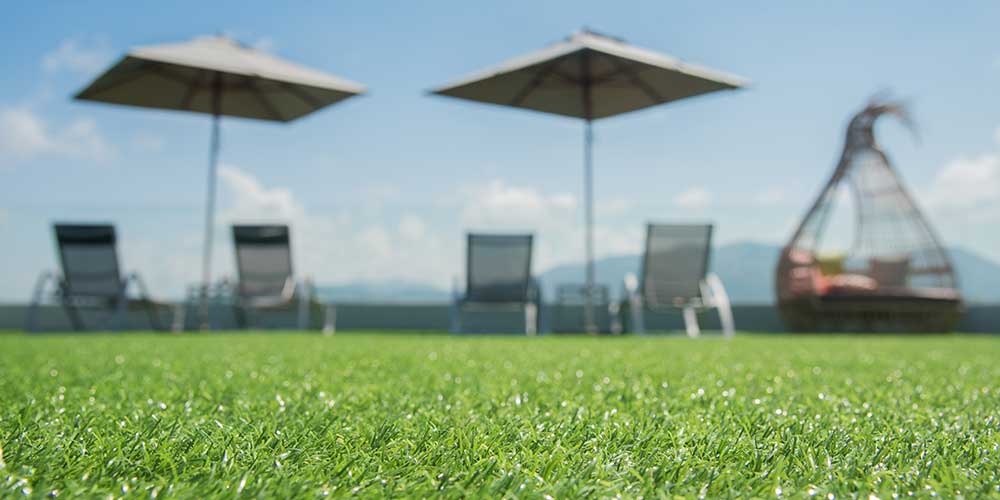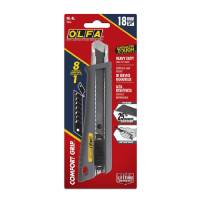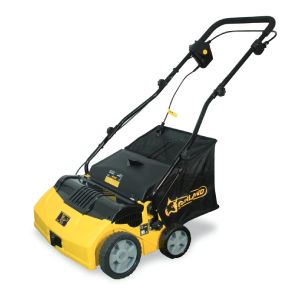- Duralawn
- Artificial Grass Installation
- Artificial Grass on Concrete
Artificial Grass on Concrete
Artificial grass on concrete or asphalt is growing in popularity especially with the introduction of synthetic grasses that look more real than ever. It's an easy way to transform a dull or weathered patio, deck or rooftop into a lush and colourful area ideal for lounging, entertaining or just looking great. We've answered those questions and more so you will know exactly how artificial grass can enhance your own personal or business space.

You may be considering adding artificial grass to a concrete patio so your pet can lounge and even go potty. In most cases this will work wonderfully, synthetic grass is ideal for pets but it does need to be installed correctly when artificial grass and dogs are concerned. An example is the usage of an anti-microbial infill and even drainage tiles for increased drainage to rinse urine through. Whatever your reason for installing synthetic grass on your patio you'll find the following information extremely helpful.
Can Artificial Grass be Installed on Concrete?
Yes, artificial grass can be installed on concrete and asphalt that has adequate drainage and the integrity of the concrete hasn't been compromised. You may need to repair minor damage before installing the grass including cracks or gaps larger than a 1/2", craters or low spots. The grass will hide some imperfections especially if you use a tile or foam underlay but you should fix any large holes before starting the installation. We'll discuss levelling and cleaning the concrete more below.

An artificial grass designed for pools is a great way to transform an abrasive concrete pool patio into a soft, inviting, non-slip area to lounge and enjoy in bare feet all summer long. You may even want to add some colour to a backyard patio, balcony or rooftop or transform a children's play area. The applications are endless since artificial grass can be installed in just about any area as long as it's done properly.
There are a few limitations that you should be aware of that will help you in deciding if artificial grass is a good idea or not. Artificial grass requires drainage and without proper drainage it can collect water that could potentially lead to mold or mildew. We discuss how to check for drainage issues and improve drainage with patio tiles or a levelling compound below.
If you are laying artificial grass directly on any hard surface it will not be as soft as natural grass. While this might be perfectly fine for most applications, it's not ideal for children's play areas. An option is to add a cushiony foam underlay that will lay between the concrete and grass. Artificial grass also retains more heat than natural grass making it important to incorporate shade into the area especially if it receives a lot of direct sunlight.
Benefits of Artificial Grass on Concrete
The benefits of artificial grass on concrete are numerous especially when you compare it to incorporating natural grass into the area. You get a natural looking lawn that looks amazing all year long without the time consuming, expensive maintenance. In addition to saving money year after year, there's no more cutting, trimming or chemical usage. It stays really clean and if it does get dirty you can simply spray it off and it'll look like new.
The best part is that installing artificial grass on concrete is actually easier than installing it on bare ground or an existing lawn area because the base is already done. It's the base preparation that is often the most labour intensive and you get to skip that part when you lay it on top of an existing concrete slab or asphalt driveway.
How to Install Artificial Grass on Concrete
Once you have determined that the concrete is a suitable base or you've put some work into getting it that way, it's time to install the artificial grass on the concrete. If you don't feel comfortable installing it yourself we recommend hiring a professional installer for a better finish and a lot less headache. Most people with a bit of knowledge should be able to carry out the following steps to installing artificial grass on concrete themselves.
Materials and Tools Required
It's a good idea to get everything prepared before you start this step by step guide to installing artificial grass on concrete. We also recommend reading through each step before you begin so you have a good idea of what is required including tools, materials and time.
- Artificial grass suitable for your specific application. The higher the traffic, the shorter the pile height and if it's adjacent to a pool or somewhere that will get walked on in bare feet, you want an artificial grass product that is soft to the touch.
- Silica sand or anti-microbial infill. The type of artificial grass infill you use will depend on how the grass will be used; an anti-microbial is recommended for pets and silica sand for normal applications.
- Foam padding underlayment. If you want a softer surface to walk on or you'd like to hide some imperfections in the concrete, a foam underlay is a great option if it's suitable for your specific application.
- Artificial grass adhesive. We recommend using an artificial grass glue designed for outdoor use that will stand up to the flexing and contracting that comes with extreme heat and freezing temperatures.
- Self-adhesive seaming tape. If your area requires seams you might want to consider using a self-adhesive seaming tape or you can use a seam cloth in combination with adhesive.
- Concrete filler or self levelling compound. If the concrete needs minor crack repair or levelling this is a great way to get a smooth surface to lay the grass on.
The following is a list of tools required for installing artificial grass on concrete:
- Garden hose. A hose is handy for cleaning the concrete surface before installation.
- Heavy duty utility knife. An OLFA utility knife or something with a snap-off blade.
- Straight edge ruler or T-square. Ideal for making straight edge cuts.
- Adhesive spreader. A spreader for the levelling compound and a notched spreader for the adhesive.
- Drop spreader. A drop seed spreader is ideal for spreading infill evenly.
- Hammer drill. If drainage holes are required, a drill and 16mm concrete drill bit.
1. Level and Clean Existing Concrete
An important step when laying artificial grass on concrete is ensuring the concrete surface is in good shape. You want to make sure that there are no cracks larger than a 1/2" in thickness and that the surface is as smooth and level as possible. Fill any cracks larger than a 1/2" with a concrete filler as well as any craters or holes. The artificial grass will hide some small imperfections in the concrete but it will show cracks or craters that aren't addressed. If the concrete is compromised you may need to remove the concrete and start from scratch or consider installing artificial grass deck tiles.
Any loose debris including dirt, concrete pieces, weeds or moss should be removed by spraying or scrubbing the surface until it's clean. A push broom or bristle brush will work best along with a garden hose or pressure washer for a really deep clean. A clean surface will help ensure that weeds and moss don't develop over time and will create a better surface for gluing the grass to the concrete. After cleaning with water, allow the concrete to dry and then reexamine for any areas that either need filling or levelling.

2. Ensure Adequate Drainage
With any turf installation, the drainage is extremely important and installing artificial grass on concrete is no different. Water needs to drain from the area otherwise it will collect and pool leading to myriad of problems. The still standing water can lead to mold, moss, mildew and even become a breeding ground for insects and bacteria. We recommend testing the drainage capability of the concrete or asphalt before you install the artificial grass.
In most cases the drainage will be adequate but you may be one of the unfortunate few that finds drainage problems. The easiest way to asses the drainage is to spray the area down with water and see if the water drains off. If the water dissipates without puddling you should be fine, if you notice puddles you will need to fix the problem. A great solution is to drill a 1/2-3/4" hole right through to the gravel below the concrete, paying special attention to where puddles formed.
A concrete slab, patio or deck should have a slope or grade of at least two percent or 1/4" per foot, that allows water to drain away from the house or in a desired direction designed to handle water. In most cases the drainage will be more than adequate and you simply need to move onto the next step of the artificial grass on concrete installation process.
Artificial Grass Drainage Tiles
If your unique application requires increased drainage you may want to consider drainage tiles made specifically to allow better drainage for artificial grass. They are ideal for rooftop and pet applications where high drainage is a necessity to keep the area clean and sanitary. Drainage tiles for artificial grass provide a solid interlocking base that increases both water drainage and airflow. If you are unsure if this is a good option for you be sure to contact us with your specific questions.
The drainage tiles are installed by interlocking the pieces together until the entire area is covered. The tiles can be cut with a table saw, circular saw and even a jig saw if detailed cuts need to be made. In essence you are creating a floating floor that will allow air circulating and increased water movement below the artificial grass. The approximately 1/2" thickness of the tiles should be incorporated into the overall design plans.
3. Install Foam Underlay
When installing artificial grass on concrete you may want to consider using a foam underlay or shockpad. A foam underlay is ideal for hiding minor elevation changes in uneven concrete or asphalt and more importantly provides a soft, fall-rated surface required for most playgrounds and daycares. In some applications it may be required by local building codes so be sure to check your local by-laws. You most likely don't need a foam underlay when installing artificial grass on concrete but the benefits will outweigh the added cost and time involved.
When installing the artificial grass foam underlay it will either be on a roll or if it's a high quality foam it will likely be in mat form. Place and trim the foam making sure to cover every square inch that grass will be laid. After you have the entire area covered in foam you will need to carefully roll or move the foam so you can apply the glue to the concrete. Spread the glue with an approximate width of about 4-6" and 1/8" thick, paying special attention the outer perimeter. In a timely manner, place the foam back in place making sure there is adequate bonding between the foam and the concrete underneath.

4. Place and Trim Artificial Grass
If you installed a layer of foam we recommend waiting until the glue has set before installing the grass to prevent any shifting of the sublayer. After the glue has dried it's time to place the artificial grass on the concrete or foam layer. It's easiest to set the turf roll on one end and unroll it over the area to be covered. Keeping in mind grain direction and sensitive plants near the area that can be damaged during this unrolling process.
If there are no seams and you are sure that all edges and corners are covered, trim the perimeter to size with a utility knife or OLFA blade. If you have seams we recommend trimming and setting all seams before trimming the perimeter incase you need to adjust the seams. The seams will often need to be cut 2-4 stitch rows in from the border in order to connect the clean edges. After the seams are set and the perimeter is trimmed it's time to get ready to glue the entire area down.
Olfa 18mm Heavy Duty Rubber Grip Utility KnifeIf you click on this link and make a purchase, we may earn a commission. |
5. Glue Seams and Perimeter
At this point you should have a nice clean concrete surface with artificial grass trimmed in place or a layer of foam that's been glued to the concrete with artificial grass on top of the foam. You may even have drainage tiles under the foam layer for the increased drainage. We want to start by gluing the seams if you have them or you may have decided to use seaming tape. Whichever method you decide to go with you may find the information on our how to install artificial grass page helpful.
It's important to make sure the glue has set or the seams are positioned properly on the seaming tape before moving onto the edges. We recommend using something with a substantial weight and doesn't have sharp edges to place on top of the seams like bags of sand or infill. The weight ensures that contact is made between the entire seam area, which will increase the bonding of the glue or seaming tape.
The perimeter is glued the same way the foam layer is glued to the concrete. You are focussing on the perimeter and you want to spread the glue down to about 1/8" thickness and about 4-6" wide paying special attention to corners and high traffic areas. After the entire area is glued and the grass is placed it's a good idea to do a final check to make sure the turf is sitting properly before the glue sets.
6. Apply Infill and Broom
The final step to laying artificial grass on concrete is an important one and often unbeknownst to first time artificial grass owners. After the glue has set it's time to add either silica sand or an anti-microbial infill. A general rule is to use about 1 pound of infill per square foot of artificial grass. The sand will help weigh the grass down, helping prevent ripples, moderate temperature and reenforce the grass blades.
The most effective way to distribute the infill evenly is to use a drop seed spreader. After you have determined how many bags of infill to use, spread it over the entire surface. You then need to brush the infill into the thatch layer of the grass using a stiff broom or power broom. This step sinks the infill out of sight and also blooms the grass up which gives it a really nice look and feel.
Synthetic Grass Power Broom for Infill and GroomingIf you click on this link and make a purchase, we may earn a commission. |
Installing artificial grass on concrete is easy to do and a relatively affordable way to transform any area with added colour and increased comfort. You may want to consider an artificial grass rug for the ultimate in easy installation. This guide hopefully has shown you how you can turn an area with old faded or cracked concrete into a lush grass area that's great for lounging and entertaining. Your family, friends and even pets will get a ton of enjoyment out of your new artificial grass area for many years to come.
Disclaimer
Please use all appropriate and proper safety precautions when attempting projects on this website. All projects are attempted at the reader's own risk.
Duralawn® participates in the Amazon Services LLC Associates Program, as an Amazon Associate we may earn a commission from qualifying purchases.
Duralawn® artificial grass installations, products and service in Kelowna, Vernon, Penticton, etc since 2018.


